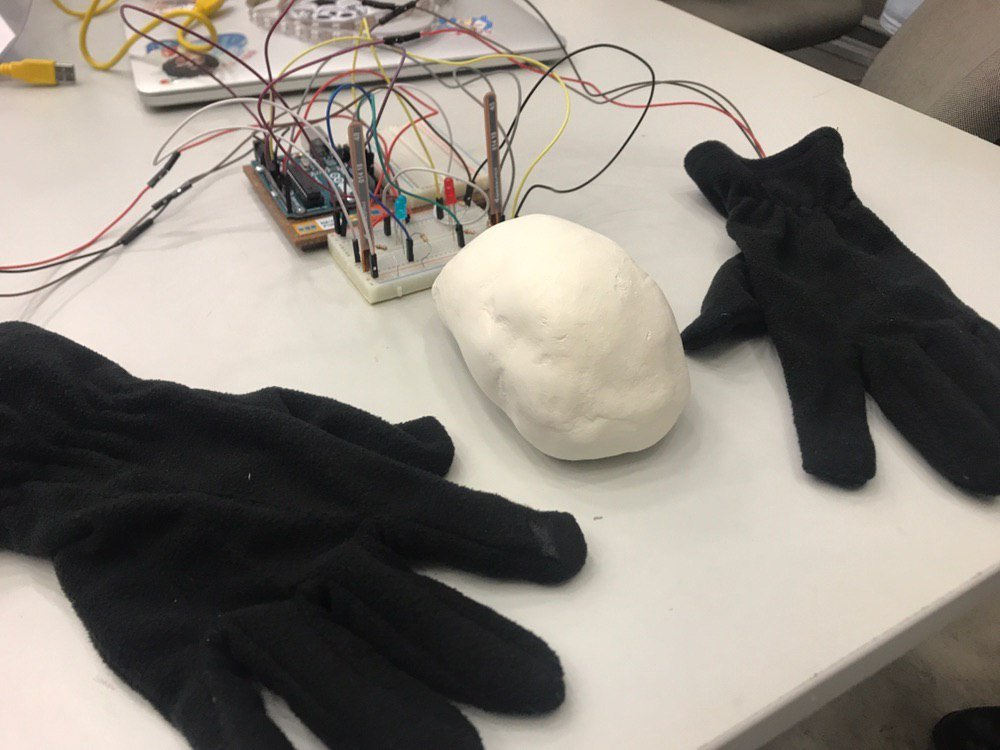numerical representation.
I believe numerical representation is related to the inputs or data that is being collected to generate the artwork. In Inter-macy, we see this in the data gathered from heart rate (pulse sensor) as well as light intensity(photosensors). Both of which gathers data as a form of numerical representation. With the pulse sensor collecting numerical data of your heart beats per minute (BPM), whereas the photosensors collecting numerical data as a range of 0 – 1024 based on the placement of your hands that blocks light.
Modularity.
Defined as a “fractal structure of new media”, inter-macy contains different modules which can work individually as well; pulse sensor, photosensor, conductive fabric, LED strips. These modules are put together to form an interactive artwork. The modules also have their own individual elements; for example, modules such as pulse sensor and LED strips have their own library of codes in Arduino, like how a webpage would consist of many separate media elements. These modules are then assembled together by functions in programming.
Automation.
A keyword we see appearing in the news a lot more often these days; Artificial Intelligence or better known as AI. Inter-macy could be described as a low-level automation where the artwork is reacting to a participant’s actions or heart rate, and where Bryan and I don’t need to stand at the back changing the outputs manually. In this aspect, we can better visualise how automation relies on numerical representation and modularity to run. Essentially, to automate something you would need some form of data and modules.
Here is an example of how the code has been designed to automatically respond to the participant’s heartbeat and hand movements through data received from the sensors.
Variability.
The different modules mentioned above allows for variables to occur. Pulse sensors and photosensors work differently from a switch, which works in only 2 states, on and off, or, high and low. These sensors detect variables of data based on the actions and heart rate of a participant. Furthermore, the artwork discusses the intimacy between 2 people and by having 2 participants, they themselves become variables because different pairs of people will produce different results. Thus, the experience of a participant is customised, and as mentioned in the book, “Similarly, every user of an interactive installation gets her own version of the work”.
After reading the section on “Principles of New Media”, I strongly believe that variability is an important aspect of Interactive Design, and it is what differentiates a passive and active interaction. When there are variables that a participant can change that is reflected in the artwork, could the artwork be considered interactive? If it could, then the artwork exists as an open interactivity which is a subset of the variability principle.
Transcoding.
One of the harder principles to grasp, to be completely honest. But from what I can understand, I guess Arduino is a form of transcoding as it is in itself a language for programming. How does Arduino translate the data inputted into the artwork? Well, Arduino has already laid out the language for us to program, so we the “content creators” only need to type in the functions we need based on the language provided and Arduino will read it and translate it out.
OTHER SIMILAR ARTWORKS
Intel Heart Bot
“An experimental drawing machine powered by the heart rate of each viewer.”
Heart of the City

An interactive sculpture created by Brazilian artist Anaisa Franco is a visualization of your heartbeat on a three-seat chair moulded in the shape of a human heart. The sculpture lights up in vibrant neon lights, which pulses in the rhythm of your heartbeat.


